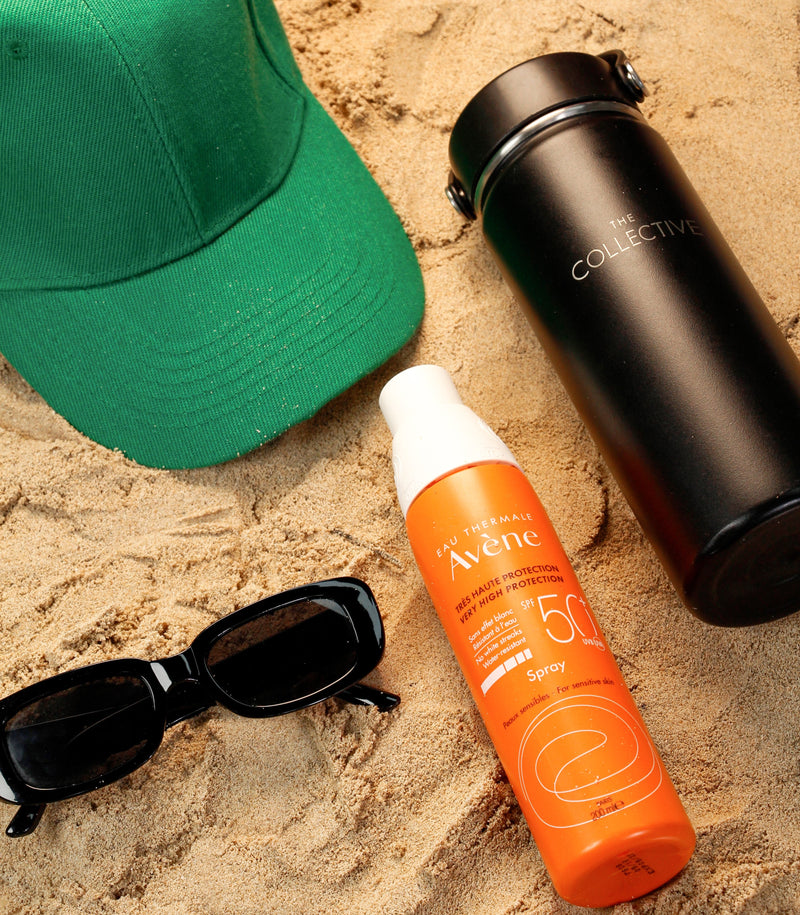Hey There!
We noticed that you're not from the Philippines!.
To provide you with the best possible shopping experience, we recommend using our International Store instead.

When it comes to sun safety and sunscreen, knowledge is power!
With a multitude of options available, it is crucial to choose the right sun care products for year-round skin protection. You’ve probably heard of SPF (Sun Protection Factor), but there are now more advanced protective substances and rating systems available. It can be overwhelming to navigate the labels, but they’re designed to help you choose the right products for your skin. One rating you may have seen is “PA +++”. We’re here to decode the meaning and importance of this label for you!
Before we can delve into the PA+++ rating systems, it’s important to take a look at why sunscreen and sun protection is so important.
Whether you’re lying on a sunny beach or commuting to work on a rainy day, any time you’re outside, regardless of season, your skin is exposed to ultraviolet radiation (UV).
You’ve likely experienced a sunburn at least once in your life. Red, sensitive skin that’s swollen to the touch and heat are the hallmark of an average sunburn. If you looked at your sunburned skin under a microscope, you’d spot damaged skin cells and blood vessels. Repeated sunburns can result in dry, discolored, and leathery skin. Such skin becomes more susceptible to bruising.
While a sunburn is an immediate, visible, result of spending too much time in the sun, the damage goes much deeper.
Even if it takes quite a bit of time spent under the sun to burn your skin, exposure to UV rays can lead to DNA damage in your skin cells. This damage can potentially lead to premature aging, suppression of the immune system, or skin cancer.
When it comes to UV radiation, there are three different categories:
UVA rays: This type of radiation penetrates deep into the skin and is associated with premature skin aging as well as an increased risk of skin cancer.
UVB rays: This type of radiation is responsible for the color change in your skin after spending time outdoors—your tan or sunburn is a direct result of UVB rays.
UVC rays: This type of radiation is completely absorbed by the earth’s atmosphere and won’t reach your skin to cause damage. Luckily, this is the type of UV radiation you don’t need to worry about.
The ultimate goal of sunscreen is to shield your skin against both UVA and UVB rays.
To understand the rating systems used on your favorite products, it’s important to understand how sunscreen protects your skin.
Sunscreen products are typically made up of a mix of inorganic and organic chemicals.
|
TYPE OF CHEMICAL |
INORGANIC |
ORGANIC |
|
EXAMPLES |
Zinc Oxide, Titanium Oxide |
Oxybenzone, Avobenzone |
|
USES |
Acts as physical sunblock; Adept at reflecting UV rays |
Able to absorb UV radiation then release it from the body as heat |
Sun Protection Factor or SPF is all about how well your sunscreen or cosmetics protect your skin from the sun’s harmful UVB rays. It basically measures a product's effectiveness in blocking UVB rays, which are responsible for sunburn and skin reddening.
The number you see on the label indicates how long it will take for your skin to burn when exposed to the sun. If you’re wearing SPF 50, you’re looking at about 8 to 17 hours of burn-free skin. But remember, you’ll need to reapply every couple of hours to keep that protection strong.
So, have you ever wondered where the PA +++ rating came from? It was developed in Japan as a way to indicate the level of protection a product offers from UVA rays.
The PA rating system is based on the Persistent Pigment Darkening (PPD) method, which measures how much UVA exposure a person can handle before their skin tans.
Due to the absence of a standardized system for evaluating PPD scores, various rating systems are employed worldwide to indicate the strength of a product's UVA protection. Japan simplified its PPD results into PA measurements, which is why you’ll see the PA +++ rating on many sunscreen, makeup, and skincare products today!
PA+ means your sunscreen or cosmetic provides some protection against UVA rays.
PA++ provides moderate protection.
PA+++ offers the best protection of the three PA rating systems.
PA++++ is rare and this level of protection is found in a few products.
Japan was the first country to introduce PA++++, but not all countries have adopted it yet, so PA+++ is still commonly used as the highest rating.
The general rule is that each additional plus sign on a product's PA rating signifies enhanced protection against UVA rays. So, if you’re looking for effective sun protection, be sure to choose a product with at least a PA+++ rating!
If the product you’re using offers both UVA and UVB protection, it will be labeled as Broad Spectrum.
Your skin deserves to be protected, whether you’re heading to the beach or running errands in the rainy season. It is crucial to understand how your skincare products protect your skin from sun damage.
So, whether a sunscreen uses the SPF or PA+++ rating system (and its neither essential nor a mark of a superior product), a well-formulated sunscreen product will provide broad spectrum protection and, as with any sunscreen, must be applied liberally and reapplied as needed to maintain the labeled level of protection.